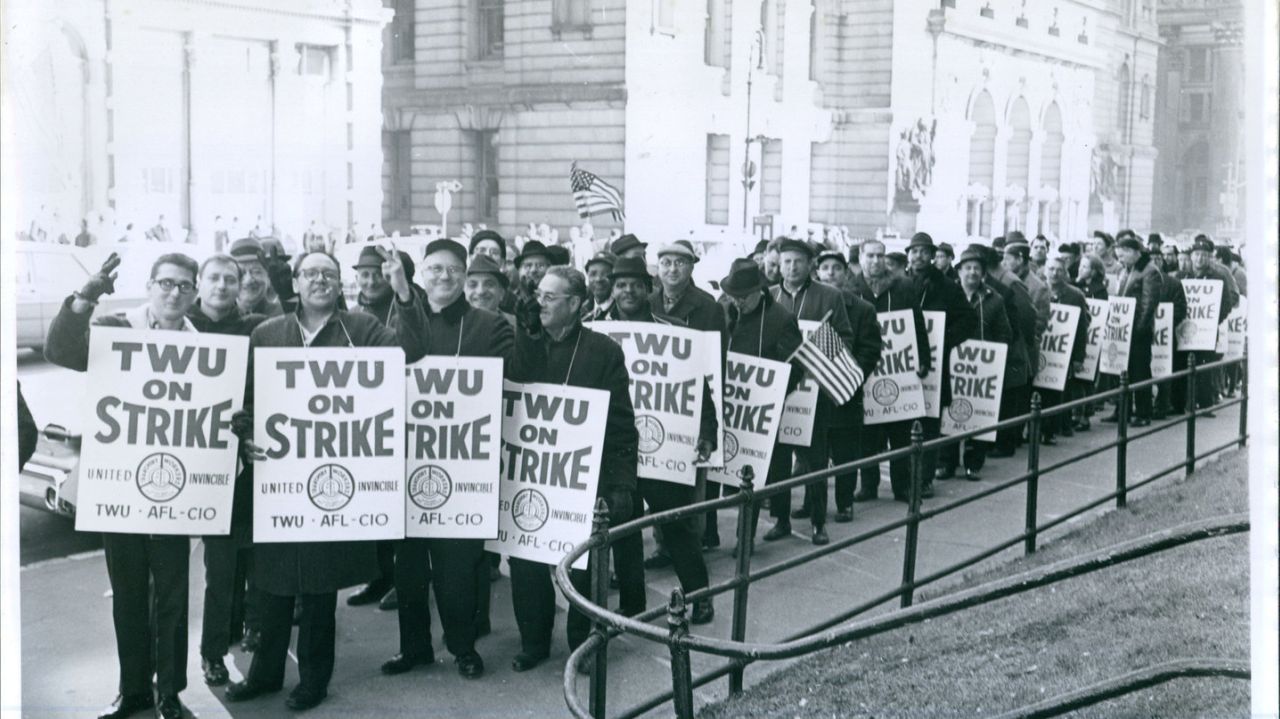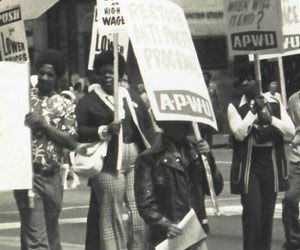January 17, 2025
Our Labor History: National Strike Against GE and New York Transit Strike
National Strike Against General Electric Sparks Shutdown of Major Industries
January 15 1946 – nearly 200,000 workers struck against General Electric (GE) and Westinghouse for better wages and benefits. The workers primarily members of the United Electrical Workers (UE) union were protesting low wages poor working conditions and a lack of recognition for their contributions to the war eff ort during World War II where major U.S. industries raked in unprecedented profits while workers endured frozen wages and increased costs of living.
While preparing for its 1946 contract negotiations the UE met with the auto and steel worker unions to coordinate bargaining strategies among the major industries. The unions agreed to demand 25¢ per hour wage increases in their respective contract fights to make up for years of frozen wages and rising costs. While GE initially refused any wage increases they later offered a raise of just one-half cent per hour. The union rejected the offer cited the company’s record profits and declared a strike. One week later 800,000 steelworkers joined the strike. For the first time in U.S. history the unified actions of workers shut down the three major U.S industries. The GE strike ended after nine weeks when the company agreed to a one-year contract that included an 18.5¢ per hour wage increase. These actions were part of a post-war strike wave across America during the post-war industrial boom. ■
New York Transit Strike Shuts Down City Secures Win for Workers
 January 1 1966 – Following failed New Year’s Eve negotiations with the New York City Transit Authority (TA) over an expiring collective bargaining agreement covering subway and bus operators more than 33,000 members of the Transport Workers Union (TWU) and 2,000 members of the Amalgamated Transit Union (ATU) went on strike shutting down the city’s transit system and beginning a historic 12-day strike on the first day of the New Year. It was the unions’ first city-wide action. Their demands included a 30 percent raise; a 32-hour four-day workweek; retirement at half pay after 25 years; and improved pension benefits.
January 1 1966 – Following failed New Year’s Eve negotiations with the New York City Transit Authority (TA) over an expiring collective bargaining agreement covering subway and bus operators more than 33,000 members of the Transport Workers Union (TWU) and 2,000 members of the Amalgamated Transit Union (ATU) went on strike shutting down the city’s transit system and beginning a historic 12-day strike on the first day of the New Year. It was the unions’ first city-wide action. Their demands included a 30 percent raise; a 32-hour four-day workweek; retirement at half pay after 25 years; and improved pension benefits.
Complicating matters was the change from Democratic mayor Robert Wagner to incoming Republican mayor John Lindsay beginning New Year’s Day. Promptly after his inauguration Mayor Lindsay took legal action calling the strike “illegal.”
The State Supreme Court Justice George Tilzer issued an injunction to stop the strike from taking place but TWU founding president Michael Quill broke the injunction ignored mayor Lindsay’s command to end the strike. He was arrested along with eight other union leaders. Quill had a heart attack in jail and turned negotiations over to TWU Secretary- Treasurer Doug MacMahon but he continued to assist with negotiations from an oxygen tent.
The strike brought the city to a standstill for the millions who relied on the transit system. Many commuters ended up walking over the Brooklyn Bridge to get into Manhattan. Those too far to walk had to leave their homes by 4 a.m. and brave the congested streets. Some schoolchildren missed up to nine days of school while others were diverted to the closest school. The workers had the upper hand.
Nearly two weeks into the strike the parties entered mediation and came to an agreement based on the mediator’s suggested settlement which included a 15 percent wage increase an additional paid holiday increased pension benefits and other improved benefits for the union’s workers. The striking transit workers were given amnesty for participating in the so-called “illegal strike” and kept their jobs with the city.
The agreement announced on Jan. 13 ended the strike. Both unions returned to work and the city’s transit operations resumed within hours. Quill died three days after the TWU reached the agreement. ■



